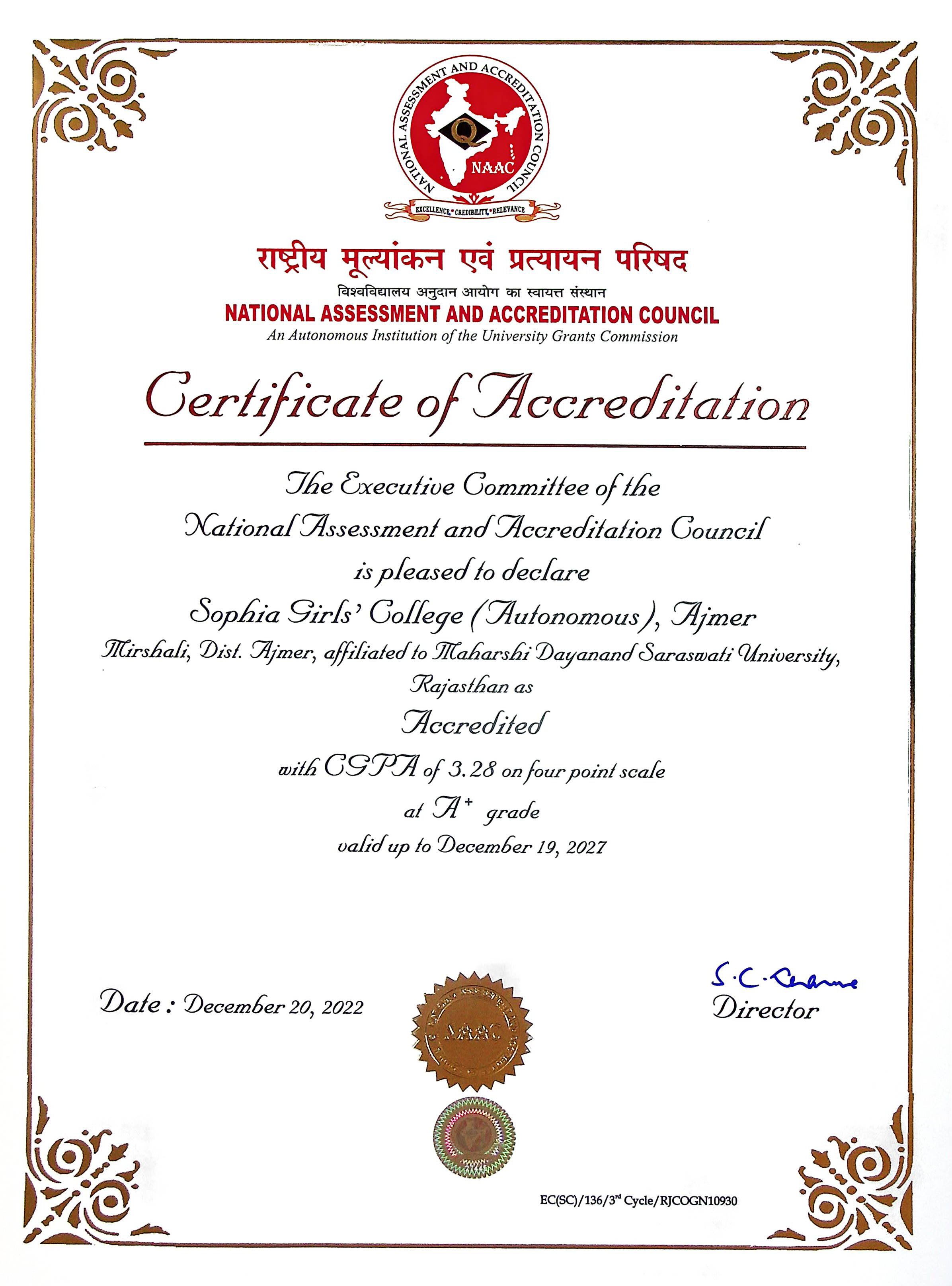AFFILIATED TO THE MAHARSHI DAYANAND SARASWATI UNIVERSITY, AJMER
Sophia College (Autonomous), Ajmer
RE-ACCREDITED 'A+' GRADE
BY NAAC (UGC)
BY NAAC (UGC)



The NATIONAL ASSESSMENT AND ACCREDITATION COUNCIL (NAAC) is an autonomous institution established by the UGC in 1994.NAAC conducts assessment and accreditation of Higher Educational Institutions (HEI) such as Colleges, Universities or other recognised institutions to derive an understanding of the ‘Quality Status’ of the institution. NAAC evaluates the institutions for its conformance to the standards of quality in terms of its performance related to the educational processes and outcomes, curriculum coverage, teaching-learning processes, faculty, research, infrastructure, learning resources, organisation, governance, financial well being and student services.
Self Study Report 2016-2021
Click here to downloadNAAC Accrediation Certificate
